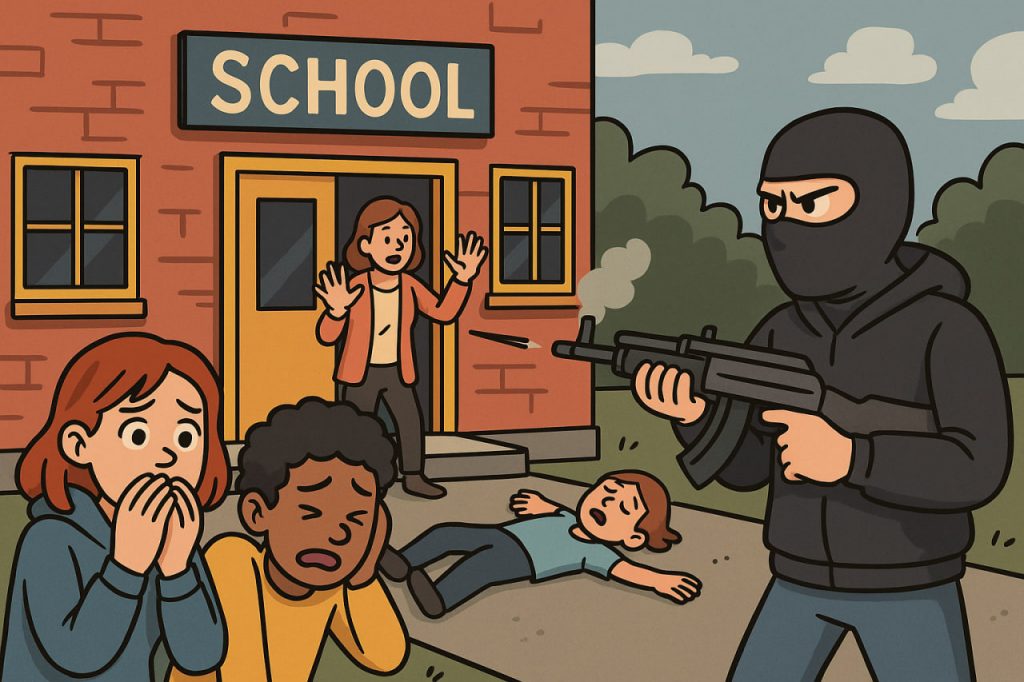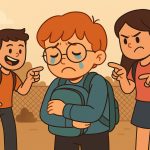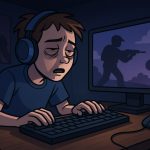School shootings have become one of the most disturbing and tragic forms of violence in modern society. While they are most prevalent in the United States, the emotional shock and global concern surrounding them extend far beyond national borders. These events not only devastate families and communities, but they also highlight urgent public health, mental health, and societal challenges.
Medical professionals and psychologists are now working together to understand the root causes behind school shootings and explore ways to prevent them.
Who Commits School Shootings – and Why?
Research shows that perpetrators of school shootings are often:
- Adolescents or young adults, mostly male
- Frequently victims of bullying, social exclusion, or trauma
- Struggling with mental health issues such as depression, anxiety, or conduct disorders
- Exposed to domestic violence, childhood abuse, or neglect
- Sometimes obsessed with violent media, online forums, or previous shooters
However, mental illness alone is not a predictor of violence. Most people with mental health disorders are not violent. It is the combination of untreated symptoms, social stressors, and access to weapons that increases risk.
What Brain Science Reveals
Neuroscientists and forensic psychiatrists have found key brain factors in some school shooters:
- Underdeveloped prefrontal cortex — responsible for judgment, empathy, and impulse control
- Overactivation of the amygdala, which governs fear and aggression
- History of early trauma, which alters stress response systems permanently
- Desensitization to violence through repeated exposure in media or gaming (in some individuals)
Still, experts emphasize that no single brain scan can predict violent behavior, and these findings must be evaluated in context.
Warning Signs and Missed Opportunities
In many cases, school shooters displayed warning signs months or years before the act:
- Threats made online or to peers
- Animal cruelty or interest in weapons
- Withdrawal from social life or sudden personality shifts
- Expression of revenge fantasies, suicidal thoughts, or identity crisis
- Seeking validation through online violence subcultures
Doctors, teachers, and parents often miss or downplay these signs — either due to lack of training, fear of overreacting, or social stigma around mental health.
Mental Health Is Prevention
Mental health professionals stress that early intervention is key. The most effective ways to reduce risk include:
- Accessible school-based therapy and crisis intervention
- Trauma-informed education that identifies and supports at-risk youth
- Teaching emotional regulation and conflict resolution
- Promoting social inclusion and peer support
- De-stigmatizing psychological care in both children and parents
When mental health becomes as central as academics in schools, experts believe many tragedies can be avoided.
Doctors on the Physical and Social Toll
Emergency room doctors and trauma surgeons see firsthand the devastating physical injuries from shootings — many of which are survivable with rapid response, but preventable with better policy.
Public health experts, such as those at the American Academy of Pediatrics, call gun violence a pediatric health crisis. Survivors often suffer from:
- Post-traumatic stress disorder (PTSD)
- Chronic anxiety and sleep problems
- Depression, survivor’s guilt, and suicidal ideation
- Academic failure and social withdrawal
And this applies not only to victims, but to entire school communities.
What Medical Experts Recommend
Doctors and mental health professionals call for:
- Better gun safety laws and secure storage
- Mandatory mental health evaluations after threats or suspensions
- More funding for school psychologists and counselors
- National programs for violence prevention education
- Stronger parent-school communication systems
They stress that prevention must be proactive, not reactive — identifying at-risk students before a crisis emerges.
Glossary
- Prefrontal cortex: Brain region involved in planning, empathy, and self-control
- Amygdala: A brain structure that processes fear and emotional responses
- PTSD (Post-Traumatic Stress Disorder): A mental health condition triggered by traumatic experiences
- Trauma-informed care: An approach that considers past trauma in behavioral assessment
- Early intervention: Detecting and treating issues before they become severe or violent


